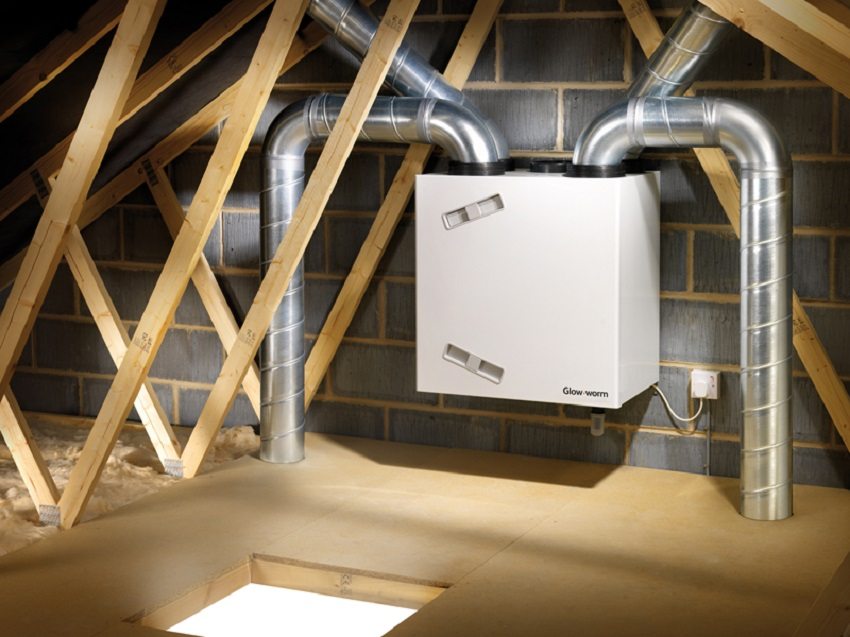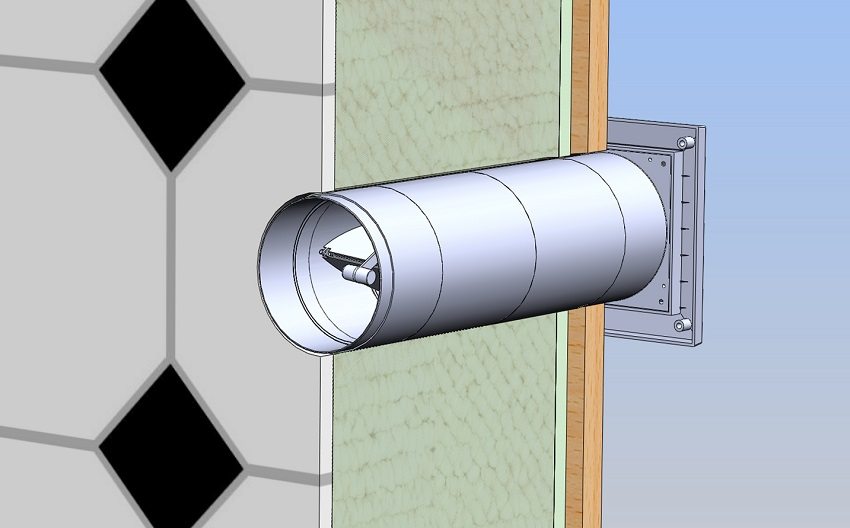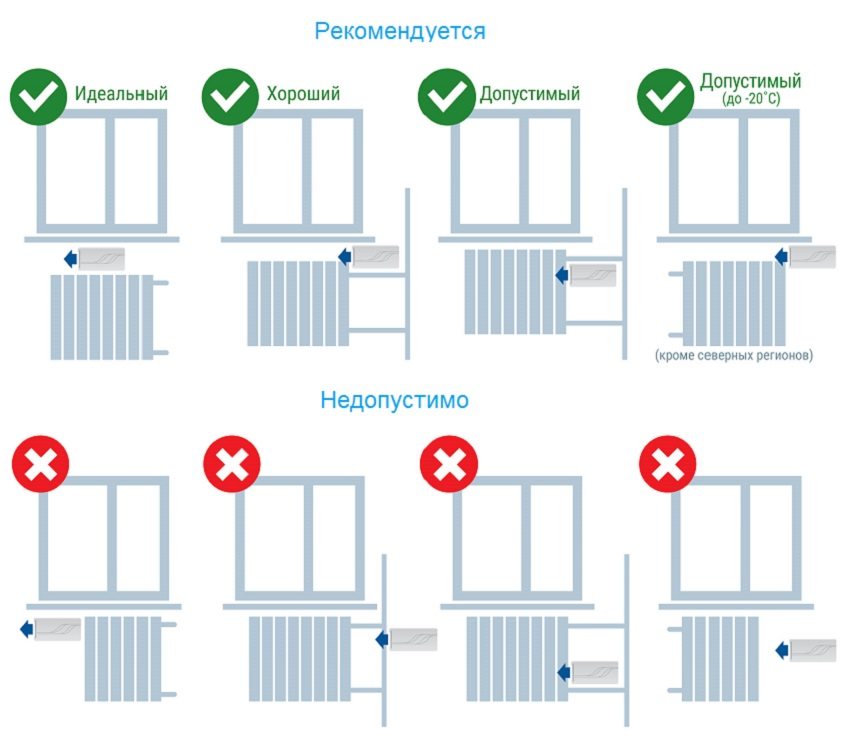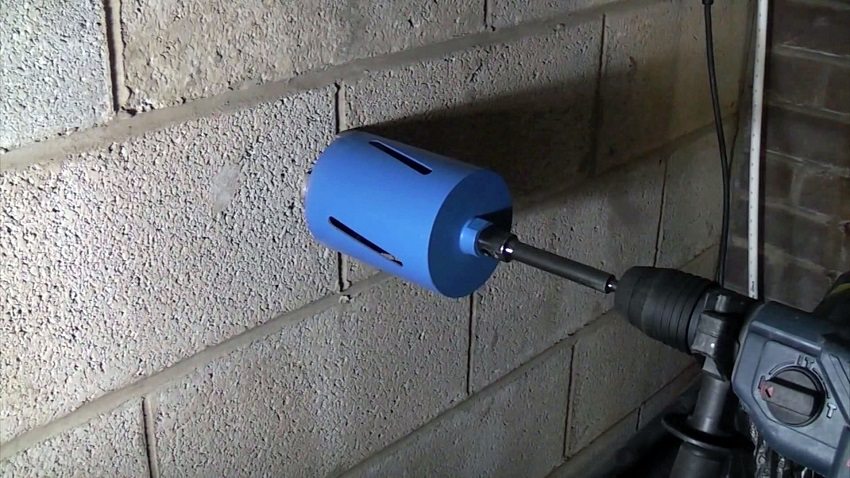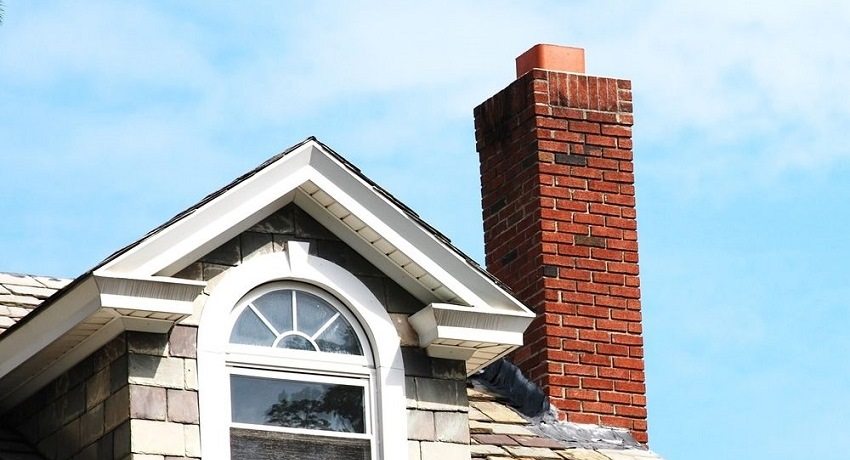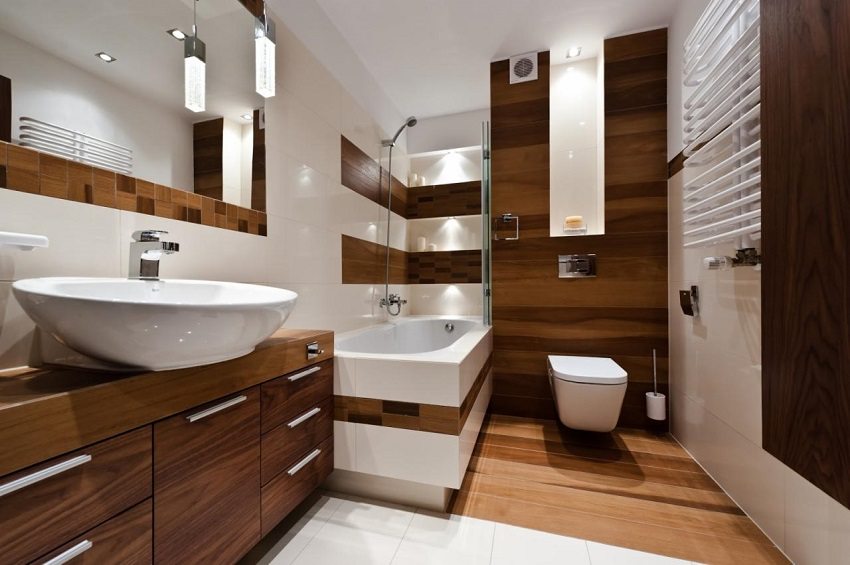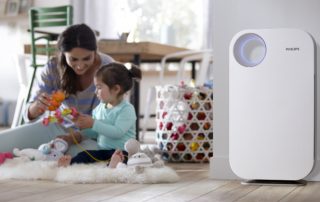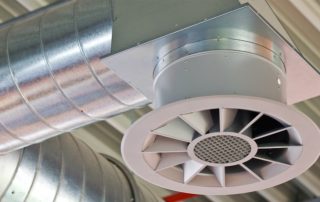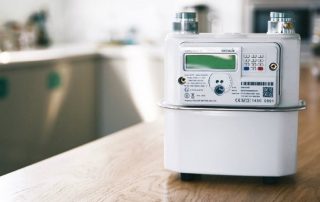In rooms where natural ventilation does not provide adequate air exchange, forced ventilation is used. Mechanical ventilation systems are designed not only to produce efficient ventilation, but also to clean, heat or cool the air coming from the street. Forced ventilation units are endowed with automatic control, they are simple and reliable in operation. With the help of such installations, not only ventilation, but also air heating of the serviced premises is possible.
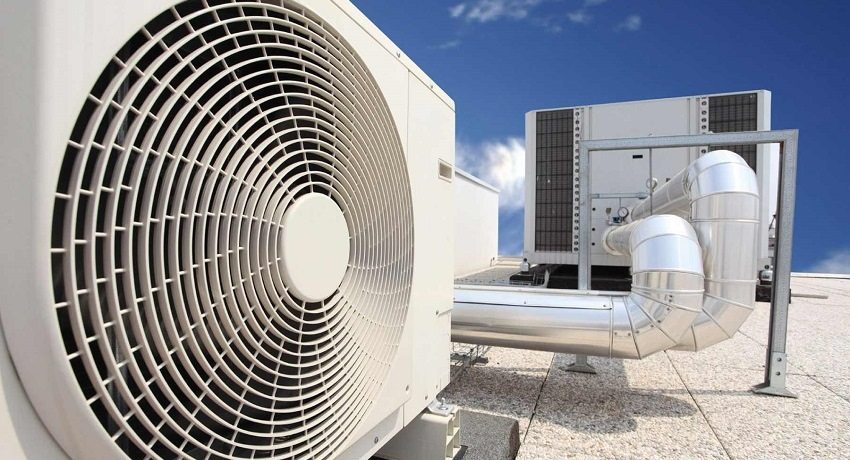
Mechanical ventilation systems provide efficient ventilation and can clean, heat or cool the air coming from outside
Content [Hide]
Forced ventilation. Types of systems with mechanical induction
At a time when the air temperature in the apartment is equal to the outside temperature, the draft of natural ventilation becomes weak or completely disappears. Using special devices, artificial air exchange is provided. In order to find out how to make forced ventilation, you should familiarize yourself with its types and purpose for certain premises.
Forced ventilation can be classified according to its purpose and depending on the execution configuration. There are these types of mechanical systems:
- forced ventilation - such a system provides a forced flow of outside air;
- exhaust ventilation - in which the air is mechanically removed from the room;
- supply and exhaust system - when both the inflow and outflow of air is carried out artificially.
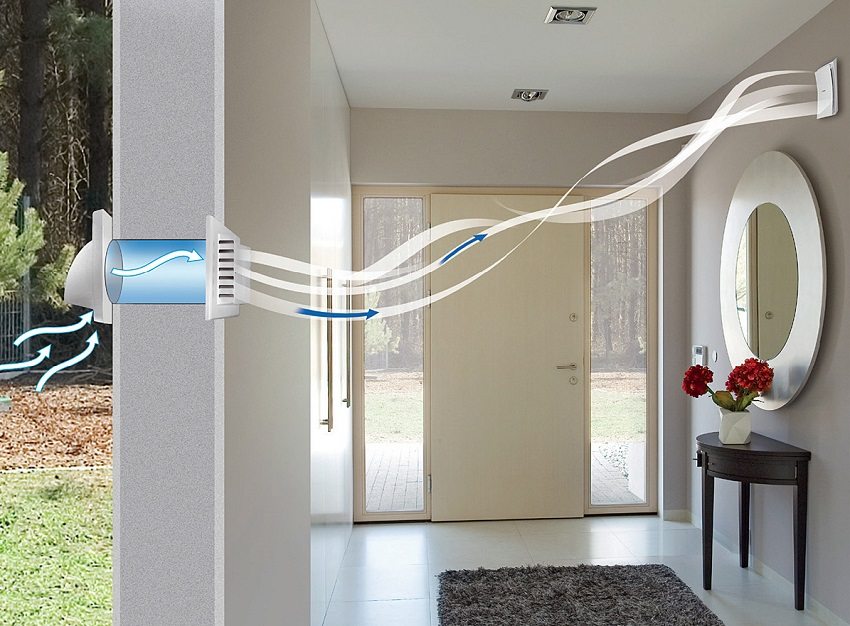
Compulsory system supply ventilation ensures efficient air exchange even in closed rooms
In turn, depending on the specific area served by this or that forced system, it can be local or general exchange. Local forced ventilation differs in that it supplies or removes air in a certain area of the room, while general ventilation produces air exchange throughout the room.
Considering whether forced ventilation systems have air ducts, they are divided into channelless (air is supplied through wall or window openings) and ducted (air circulates through ventilation pipes). According to the method of arrangement, mechanical ventilation systems can be type-setting (separate devices connected by an air duct) and monoblock (all devices are assembled in one compact case).
Forced ventilation device
You can equip the forced ventilation system of a private house or apartment with your own hands by combining various elements into one system, including:
- air intake grill - installed on the outer wall of the air duct outlet, protects the ventilation from the ingress of small objects and animals;
- filter with different degrees of purification - serves to purify the air;
- air valve - regulates the flow and blocks the entry of air from the outside when the ventilation mode is off;
- heater - heats the incoming air in cold weather. Electric air heaters are usually used for apartments. In private houses over a hundred squares - water heaters;
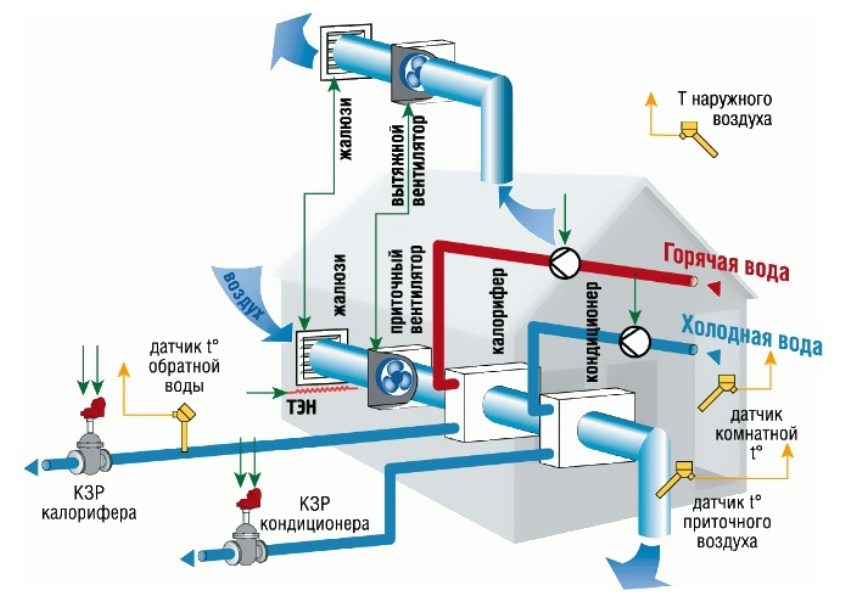
Automatic ventilation system device with air heating and air conditioning
- silencer - serves to absorb the noise of operating installations;
- fan - provides the required air pressure in the system;
- air duct - distributes air movement in the room;
- air diffusers - supply air to the rooms of an apartment or house;
- automatic control system - control and monitoring of the ventilation system.
When arranging a forced ventilation system in an apartment with your own hands, you must determine the installation location. The equipment should be placed as far away from living rooms, bedrooms and children's rooms as possible. An acceptable place for ventilation is a kitchen, hallway or balcony... If the system has high-quality sound insulation, then the noise from the operation is not heard through two closed doors. As for a private house, the system can be installed in a utility room or in the attic.
Plants and equipment for systems with forced air exchange
The choice of necessary installations for it depends on what functions the forced ventilation, which you plan to equip in the house with your own hands, will have:
- forced ventilation systems that heat the incoming air are called recuperative ventilation systems. To install such a system with your own hands, you need a device - recuperator... With this device, you can achieve high-quality air exchange, as well as air conditioning and heating;
- air recirculation unit - allows you to heat or cool air masses, while saving energy consumption. This is due to the fact that outside air is supplied to the room, mixed with warm air coming out of the room, and only air from the street is to be heated;
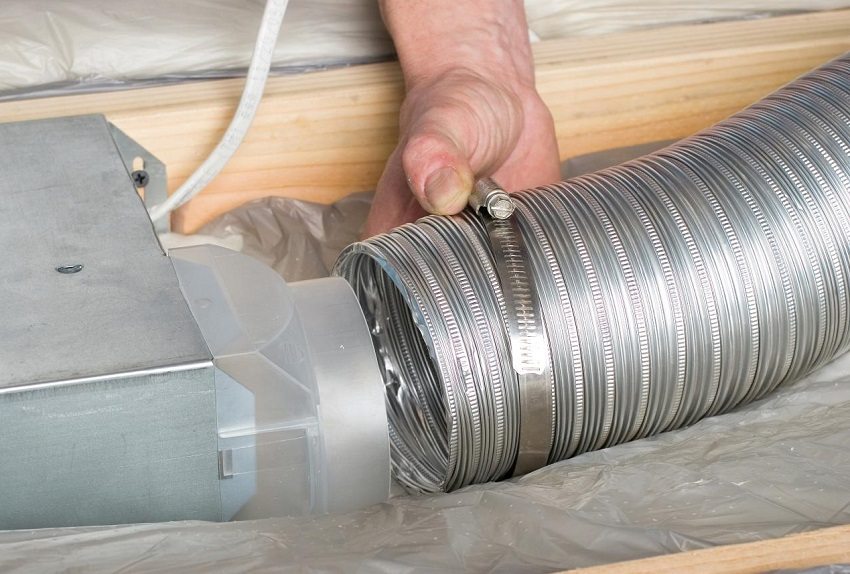
Connections of all elements ventilation systems must be especially dense so as not to disperse under air pressure
- air flow cooling unit - used in the summer at high air temperatures for cooling it (mainly used for rooms where perishable food is stored);
- air conditioning system - includes air conditioning, cold supply device and automatic air temperature control. It is relatively expensive equipment.
One of the simple ventilation devices that can be assembled by hand in an apartment or a private house is a supply valve. Such an installation supplies fresh air flow from the street, processing it through a filter. The air flow volume can be adjusted using a damper. The air inlet valve is equipped with a sound absorber. This fairly simple device will provide air exchange in a private house or apartment where metal-plastic windows.
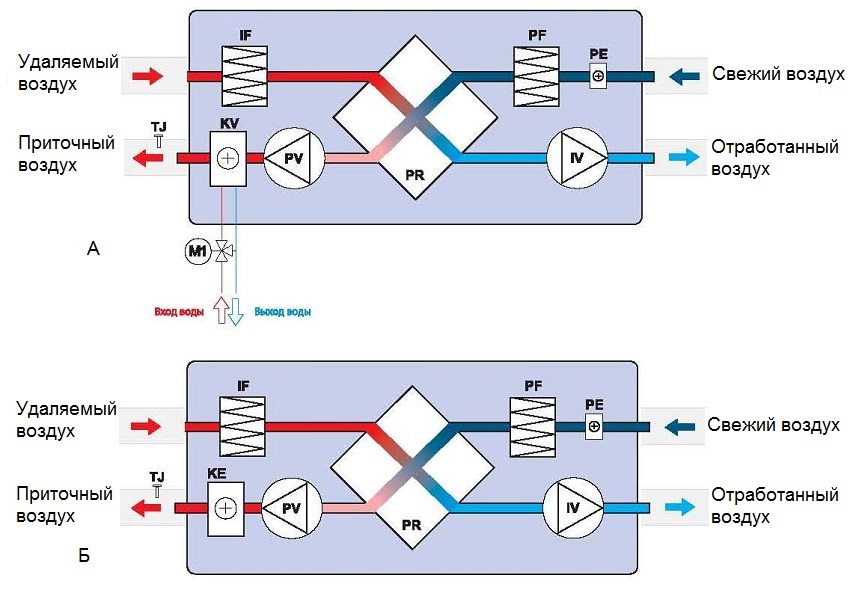
Scheme of operation of the forced ventilation system with recuperation: a - with water heating of air, b - with electric heating
DIY installation of mechanical ventilation systems
Following the recommendations, you can make forced supply and exhaust ventilation with your own hands. The supply valve is installed first.
To install a supply wall valve, you must:
- arrange a through hole in the wall about 7 cm in diameter. Insert the pipe into the hole;
- cover the pipe from the outside with a grate, thereby ensuring protection against small objects and street debris falling into the pipe;
- the gaps between the pipe and the hole are blown out with foam for installation. A box equipped with sound insulation is installed on the pipe inside the room.
Helpful advice! In order to keep the air flowing through the supply ventilation valve warm in cold weather, the valve should be installed above the central heating radiator.
The device of a mechanical exhaust system in a house or apartment is carried out by installing a fan. This ventilation system is suitable for a bathroom, toilet and kitchen. It is recommended to select the fan with the quietest operation. Such a device is a centrifugal fan.
Air duct systems are laid according to the following scheme:
- All necessary elements for ventilation are purchased: air ducts (pipes), connecting elements, seals, etc.
- According to the scheme, pipes are laid throughout the apartment or house.
- A grille is installed for air intake and used air outlet. These elements must be mounted in opposite locations.
- The forced installation is connected to the general ventilation system.
- The ventilation ducts are connected neatly and carefully so that they do not disperse when connected to the additional pressure system. In this case, ventilation will not work properly.
Helpful advice! If the ventilation system has been repaired, after the repair it is necessary to check the quality of the tightness of all connections.
Installation of forced ventilation in the kitchen
When arranging ventilation in the kitchen, many believe that the hood above the stove will be quite enough. But such a forced exhaust system is not able to remove all the exhaust air. In addition, there remains a need for fresh supply air in the kitchen.
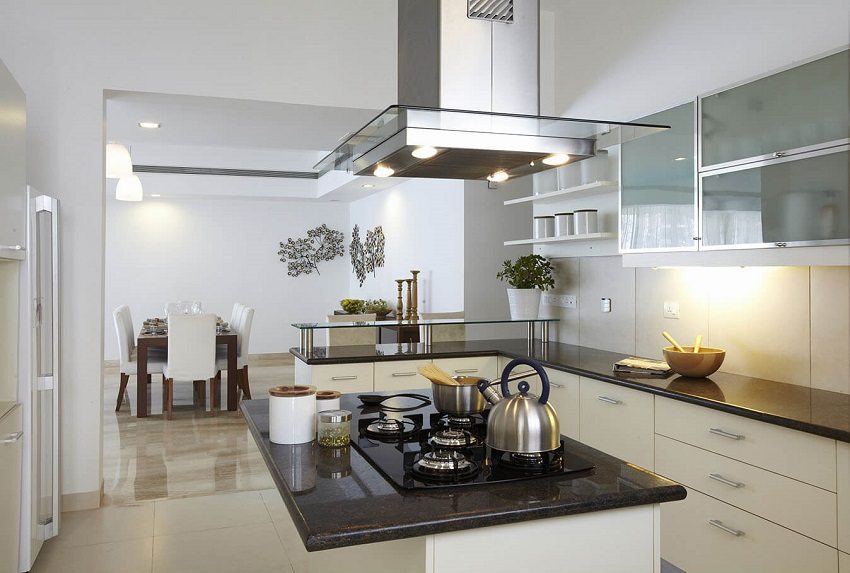
Hood above the stove will ensure the removal of used air, steam and odors, but is not able to provide high-quality air exchange in the kitchen
In order to ensure high-quality air exchange in the kitchen, first of all, the location of the inlet and outlet is determined. It is recommended to punch holes in the kitchen in the wall where the window is located, as close to the ceiling as possible. Further, following the recommendations step by step, we do the following with our own hands:
- holes with a diameter of 120 mm for exhaust and ventilation in the kitchen are arranged next to each other, as far as possible;
- pipes (air ducts) are inserted into the holes made at a slope to the outside, so that the resulting condensation is removed. The remaining gaps between the pipes and the hole are sealed with foam. The pipes should protrude from the wall by about 5-6 cm;
- as soon as the foam dries, a check valve is installed on the pipe, which is closer to the kitchen wall on which the furniture is planned to be placed (in order to insert the device correctly, make sure that the arrow points outward);
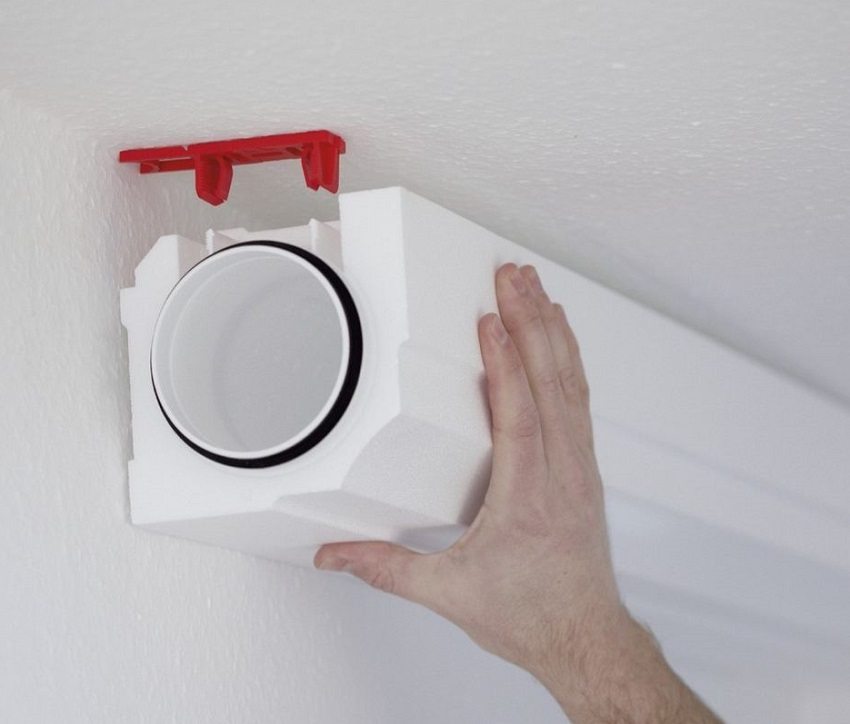
Plastic air ducts for kitchen hood fixed to the ceiling with special brackets
- we lay an air duct from pipes to kitchen hoodusing the necessary rotary parts, we connect all pipes and elements with silicone sealant. As soon as the air duct reaches the level of the hood installation, insert the swivel element and mount the connecting funnel so that it is at the level of the planned suspended structure of the device;
- in the same way we extend the duct pipes of the supply air flow in the kitchen. Determine the location of the grille (diffuser), you can install it on the ceiling. We draw a channel to its place and do not forget to make an allowance for the level of the false ceiling, if such is planned.
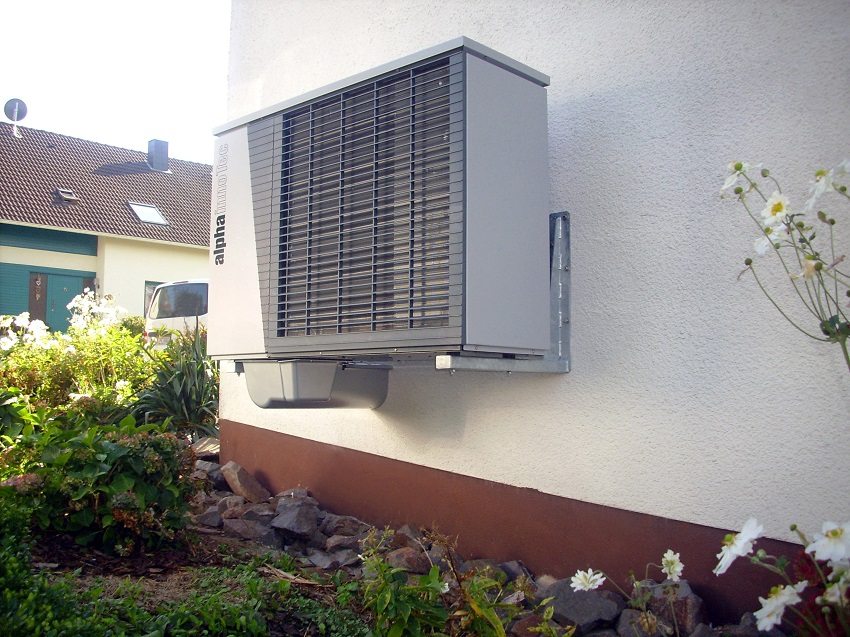
By choosing trusted manufacturers of forced air exchange systems, you can count on a long service life and high-quality installation and maintenance service
Please note that the air ducts must be fixed to the existing ceiling at least one meter apart. To make the system less noisy during operation, it is recommended to use rubber pads under the mounting brackets. Soundproofing materials such as mineral wool can be used.
Related article:
|
When arranging forced ventilation in the kitchen, it is necessary to correctly select the power of the exhaust equipment, since the rate of exhaust air removal depends on this.
Helpful advice! When replacing a cooker hood filter or cleaning equipment, follow the manufacturer's recommendations and be sure to disconnect the appliance from the mains.
Based on the norms, select the equipment of the hood in the kitchen with a margin. You can adjust the output speed using several built-in speed modes.
DIY forced ventilation device in the toilet
Bathroom with toilettaking into account the humidity formed there, it especially needs high-quality ventilation. If a natural ventilation in the apartment weak, during operation in the bathroom and toilet a fungus forms, mold and persistent unpleasant odor appear. The situation will be corrected by the organization of forced exhaust ventilation in the toilet. Before you start equipping forced ventilation in the bathroom and toilet, you should check and, if necessary, clean the ventilation duct. This is especially true of toilets and bathrooms of those apartments that are located in old buildings, where clogging and destruction of ventilation shafts is often observed. You can do this with your own hands or contact housing and maintenance specialists.
A fan is used to organize forced ventilation in the toilet. A suitable device would be a fan with a humidity sensor and a timer that will turn on automatically when the humidity rises and turn off after a certain period of time.
The fan is mounted in the opening of the exhaust duct in toilet and fastened to the wall using self-tapping screws or dowels. All wires are connected to the device, which are then carefully hidden. The wires can be hidden under a plastic box. Considering that the toilet, combined with a bathroom, is a rather humid room, the wires are connected with terminals.
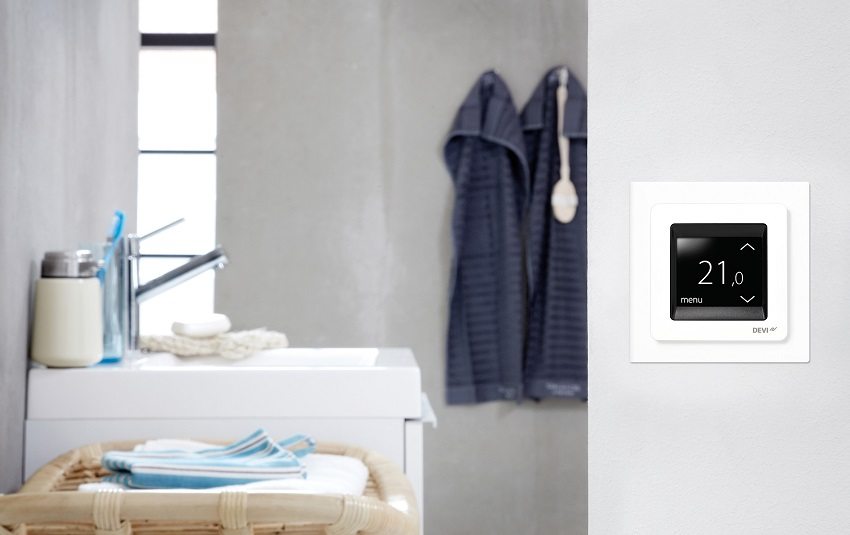
Forced ventilation with automatic control allows you to create the most comfortable conditions in the room
Forced ventilation in the bathroom and toilet will allow the air to be cleaned in a timely manner and prevent unpleasant odors from spreading throughout the house.
The correct device for forced air exchange in your house or apartment will help to cope with the long-term problems of lack of ventilation, especially in rooms with high humidity, will save you from fungus and will help maintain health.

